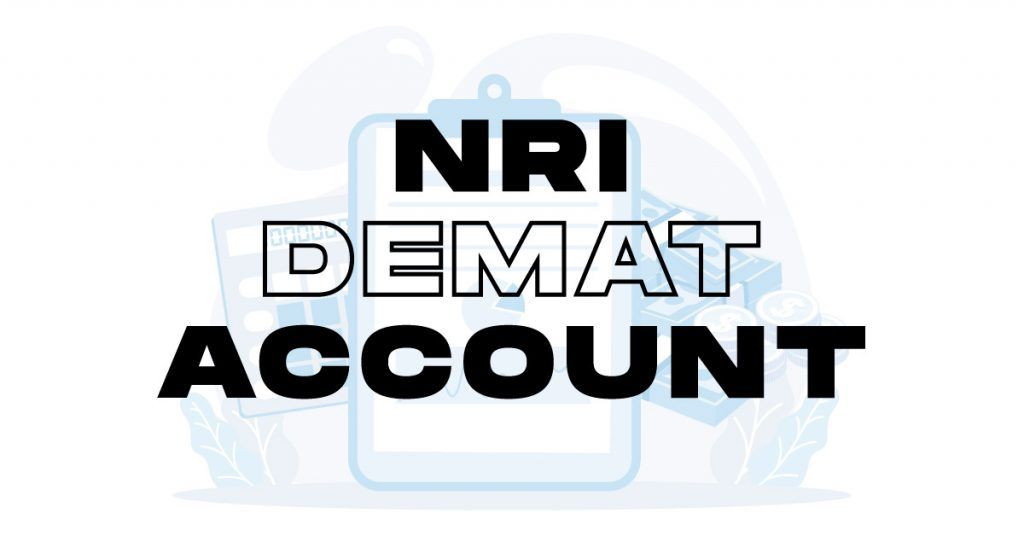What is FPO in IPO, and How to Apply?
Written by Upstox Desk
Published on July 31, 2025 | 9 min read

It is a common belief that a company only cultivates good relations with investment bankers when it is on the growth track of going public. Once it goes public, the services of investment banks for the company become limited. However, that is not the case. Many publicly listed companies avail the services of investment banks to utilize Follow-On Public Offerings (FPO) to raise more funds and reduce debt.
Here, in this article, we learn about FPOs, the difference between FPOs and IPOs, and its different aspects.
Understanding How a Company Goes Public: IPO
When a company goes public, it usually refers to its initial public offering. After issuing an IPO, a company becomes publicly traded and owned. Companies decide to go public to extend their reach and generate more capital. Venture capitalists who have invested in a company can also use it as an exit strategy.
Investment banks are the first step toward going public, and they take up the task of underwriting. They decide the price and number of publicly listed shares under due diligence. Undergoing public, privately owned shares are converted to public shares.
What is a Follow-On Public Offering?
A Follow-On Offering comes into play when a public company issues additional shares following its initial public offering. This occurs when a company decides to raise more money by issuing more shares to fund projects, settle debt, or make acquisitions.
The shares that a corporation in a follow-on offering is distributing must be made available to everyone, not just current shareholders. Additionally, the business must be publicly traded on a stock exchange and have previously offered an IPO.
An IPO is different from an Follow-On Public Offering because a company lists for the first time using the IPO process. A follow-on public offer is used when a firm seeks to raise money a couple more times after becoming public. Technically, a company could use a follow-on public offer to raise capital several times as desired.
Although FPO does not have much documentation and regulatory scrutiny, the company needs to provide a prospectus for potential investors. However, if the business re-enters the market with multiple offerings, it faces strong criticism. Subsequently, the shareholders are concerned about why the company needs more money.
Why do companies issue Follow-On Public Offering?
A company might seek to generate new equity for several reasons, such as:
- A company wants to use the money it gets from selling shares to pay down debt, especially if it has too much of it. Besides, they aim to stay away from debt because it can severely limit how their business can operate and prevent them from taking more risks.
- A corporation can balance its capital structure to maintain the appropriate debt-to-value ratio by issuing new shares to raise equity.
- They intend to issue more shares through a different sale because the IPO did not earn enough money to support their expansion objectives.
- Instead of raising more debt and increasing interest costs, the corporation would like to raise money by issuing shares to fund new initiatives, acquisitions, or business growth.
Types of FPOs
A corporation might undertake its follow-on public offering in one of two methods.
-
Dilutive FPO
When a company issues more shares to raise capital and sells them on the open market, it conducts a diluted follow-on offering. The Earnings Per Share (EPS) drops as the number of shares rises. The revenue raised with this type of FPO is used to reduce debt and change the company’s capital structure. A recent example of dilutive Follow-On Public Offering in the Indian share market is Indian Telecom Industries Ltd. (ITI).
It is a Bangalore-based public company that announced additional Rs. 18 crores of fresh shares in January 2020 at Rs. 71 -Rs. 77 price to dilute the government stakes in the company, but it was withdrawn in February 2020.
Here, the addition of revenue is beneficial to the company’s long-term prospects, which helps its shares as well.
-
Non-Dilutive FPO
Stakeholders of existing shares can sell previously issued shares on the open market in a non-diluted follow-on offering. When stock is sold as a non-diluted Follow-On Public Offering, the cash revenues are given to the shareholders who sold the stock.
This type of FPO doesn’t bring much revenue gain but rather brings changes in stakeholders’ ownership patterns. These stakeholders frequently serve as the company’s founders, board of directors members, or pre-IPO investors. Since there is no fresh issue of stocks, earnings per share remain the same.
Alternatives to FPO
An Follow-On Public Offering is not the only way to generate capital; borrowing—either from a bank or by issuing bonds—is another way for businesses to raise additional capital. Borrowing has some advantages and disadvantages as compared to issuing fresh shares. Borrowing has the benefit of not diluting the company’s existing shares, which benefits existing shareholders.
The issuing company can raise money as needed by using an at-the-market (ATM) offering. The company may choose not to offer shares if it is unhappy with the price at which they can be purchased on a particular day. Because ATM offerings can sell shares to the secondary trading market at the going rate, they are sometimes referred to as managed equity distributions.
Difference: IPO vs FPO
FPO | IPO |
| Second or subsequent public issue of shares of a publicly traded firm | First public issue of shares of a private company |
| Tries to raise money through public investment | Tries to attract additional public investment |
| Typically, it is less risky as investors are aware of the company as it is already listed on a stock exchange | Typically, it is riskier since the investor is unaware of potential future business developments |
| Tends to shift with market trends, and changes in the number of shares | Has a fixed listing price range |
Examples of Follow-On Public Offering
- In India, well-known corporations that have issued FPOs include Tata Steel Ltd., Power Finance Corporation Ltd., Engineers India Ltd., Power Grid Corporation of India, and others.
- Google sold 14,159,265 shares of Class A common stock in a follow-up offering in 2005 at $295.00 per share.
- Facebook stated in 2013 that it would issue 27,004,761 new shares. Additionally, stockholders offered an additional 42,995,239 shares, including 41,350,000 shares from the company’s CEO, Mark Zuckerberg. They wanted to enhance working capital and support business activities using the money they would get from the sale of the shares.
- Following its initial public offering, Tesla additionally issued more shares many times. In 2011 they issued 5,300,000 new shares of common stock, while in 2012, they issued 4,344,930 new shares of common stock. They announced an offering of stock for $2 billion at the start of 2020. They announced the second offering of $5 billion in equity in December 2020.
Why invest in Follow-On Public Offering?
- Investors may benefit more from investing in an FPO than an IPO because they are better familiar with the company, its management, and business practices. Investors can also identify trends in stock market performance, earnings reports, and a range of other information.
- Share prices are slightly lower than stock market pricing when corporations issue shares through Follow-On Public Offering. This allows investors to purchase shares and resell them on the secondary market for a profit without taking on any risk.
- Many investors engage in arbitrage trading, purchasing shares in an FPO at a discount and then selling them at a premium to profit.
- Investing in Follow-On Public Offering holds less risk than investing in IPO.
Follow-on public offering needs investors to do thorough research on the company and its track record, just like any other investment. Investing in FPO suits investors with a good knowledge of risk and makes it much easier to conduct research. Moreover, this enables investors to purchase company shares at a discount.
How to apply for an FPO?
The procedure for applying for it is the same as for an IPO, by applying under the Retail Individual Investors (RIIs) allocation. Anyone above the age of 18 who has a PAN card and a Demat account can begin trading. Traders can purchase shares of a company on the stock exchange where it is listed through a broker or a bank’s Application Supported by Blocked Account (ASBA) service.
Conclusion
Because you are already familiar with the company and its management, investing in an FPO is less risky than investing in an IPO. For this, you must be aware of how the business is doing financially and on the stock market. When investors buy shares in a FPO at a discount and later sell them for a higher price, they can profit from arbitrage.
Investors who lack the time to thoroughly investigate an IPO can invest in it. Therefore, investing in FPOs has a lot of benefits and minimal risks, given that investors do their research well.
Frequently Asked Questions (FAQS)
Q. What are the risks of dilutive FPO?
- Since the company issues more shares in the open market in dilutive FPO, the earnings per share (EPS) decreases as the number of shares increases.
Q. Why do companies issue FPO?
Companies issue FPO to raise money to pay off debt, rebalance capital structure, to fund new projects, acquisitions, and business operations.
Q. Is the secondary market offering and FPO the same?
Secondary market offering and non-dilutive are the same, where the privately held shares are offered for sale, with no new shares created.
Q. How is FPO a safer investment than IPO?
IPO is often riskier than an FPO since retail investors might not be completely informed of the potential future business developments with an IPO.
Q. Is FPO good for shareholders?
They are safer investments when it comes to public offerings. Unlike IPO, FPO doesn’t require financial knowledge about investment. Investors are provided with historical data about the company and can research the company’s business growth before investing.
Q. Who is eligible for FPO?
Anyone above the age of 18 with a PAN card and a Demat account is eligible to apply for it.
Q. What happens to share price after FPO?
Share prices and earnings per share decrease in case of dilutive FPO. When it is a non-dilutive offering, the share prices tend to remain the same.
About Author
Upstox Desk
Upstox Desk
Team of expert writers dedicated to providing insightful and comprehensive coverage on stock markets, economic trends, commodities, business developments, and personal finance. With a passion for delivering valuable information, the team strives to keep readers informed about the latest trends and developments in the financial world.
Read more from UpstoxUpstox is a leading Indian financial services company that offers online trading and investment services in stocks, commodities, currencies, mutual funds, and more. Founded in 2009 and headquartered in Mumbai, Upstox is backed by prominent investors including Ratan Tata, Tiger Global, and Kalaari Capital. It operates under RKSV Securities and is registered with SEBI, NSE, BSE, and other regulatory bodies, ensuring secure and compliant trading experiences.

























